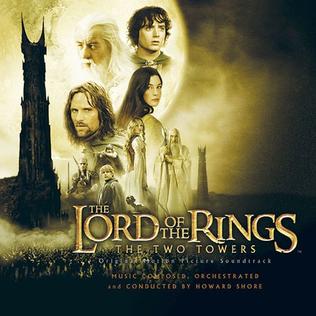
Composed by: Howard Shore
The third installment of the Lord of the Rings trilogy, The Return of the King, became the third movie to win eleven academy awards. While the battle scenes are fun and there is no shortage of great moments regarding the characters, I find Return of the King to be a little overrated and undeserving of a couple of the Oscars (though some of those Oscars were awarded for the whole trilogy rather than just the last film). Attempts at forcing extra drama resulted in some unfortunate deviations from Tolkien’s story and themes. The ending is permeated with overdrawn slow-motion scenes of Hobbits crying or staring, which drove some audience members out of their minds.
The music, however, is the best of the trilogy. Howard Shore really earned his Oscar with this one. But if you want a good album, you’re going to have to shell out the money for the complete recordings, because the original release lacks some really good parts. Before diving into the two releases, it would be good to get into some of the new major themes, or rather themes present in earlier films and only now developed to their full potential. The Gondor theme, which appeared in small bits in the first two films, is finally revealed in its full grandeur. Shore could have used it more, as part of the city was even seen early in the first film, but chose to reserve its full-fledged appearance for the last act. It’s a big, heroic fanfare for the greatest civilization confronting Sauron’s forces. The Gondor theme first caught major attention through a prominent rendition in the trailer. Its appearances in the film months later did not disappoint. Powerful usage at the end of “Minas Tirith” and in the beacons lighting scene immediately marked it as one of the greatest musical identities in the series. I recently read and confirmed that there are two versions of the full theme. One ends with descending notes while the other ascends by incorporating Aragorn’s motif. Continue reading

